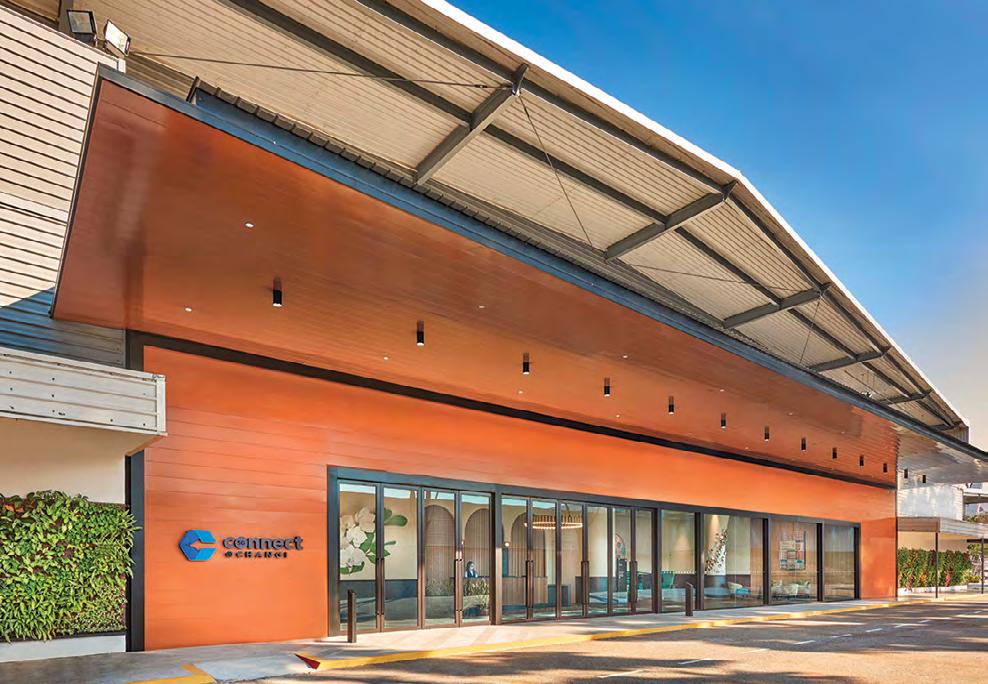CIVIL & STRUCTURAL ENGINEERING
DESIGN ECONOMICS OF
MULTI-PURPOSE OFFSHORE WIND FARMS by Bob L Y Cheung, Bob Cheung Offshore Consultants, Singapore The conventional development concept and an alternative approach are presented and compared.
INTRODUCTION Climate change is one of the most urgent challenges facing the world today and renewable energy will certainly replace fossil fuels in the near future. Several rich nations, mostly in Western Europe, have set net-zero targets before 2050 and more countries are set to follow, depending on their financial resources. These rich nations have chosen wind energy, especially offshore wind, as the most suitable renewable energy for the transition to a net-zero carbon future. The selection is reasonable based on their situations and locations, yet it is far from certain if developing countries will follow the same transition route as their developed peers due to high cost and other reasons. Presently, these rich nations are moving swiftly in the development - several huge offshore wind farms will be operational in the next two to three years. The rest of the world, on the other hand, is hardly moving at all, with the exception of China. Energy transition is a global concern and we have to find ways to bring down the high cost of Offshore Wind Farms (OWFs) so that more countries can participate. In some countries, solar energy may be a cheaper choice. The purpose of this article is to analyse the cost components of a typical OWF project in Europe and question both the need for such high costs and the suitability of the present development concept for other countries, and then propose an alternative approach to reduce the lifetime OWF cost. In short, the proposed concept is a poor-man’s solution to a super expensive OWF project.
REVIEW OF THE ‘STANDARD’ OWF DEVELOPMENT CONCEPT OWF development is similar to offshore oil and gas production. Before a site is selected, various site investigations and feasibility studies would have been conducted to assess the suitability of the site. The studies may cover wind flow patterns, soil investigations, environmental impact, field layout, turbine and cable selection, onshore and offshore substations etc. The developers will carefully look at the costs for the set-up, design, installation, operation, maintenance and decommissioning of the project, to make sure it is profitable. They would be more interested in the Levelized Cost of Energy (LCOE) of the project for
comparison, but this is not our objective. We are only interested in the total cost reduction from a technical viewpoint. In summary, the ‘standard’ development concept calls for installing all the turbines using either monopiles or jackets as foundation. The preference is for a jack-up vessel to install the turbines, as it can provide a more stable working platform for lifting. Once completed, cables will run from the nacelle down the turbine tower to the transition piece and the monopile via a J-tube to the seabed. If it is a jacket foundation, the cables will run from the outlet at the bottom of the turbine tower into the J-tube, then to the sea floor. The infield array cable will then be laid using a cable-lay installation vessel to connect it to a substation or other turbines. The cables will be buried in 2 m to 3 m below the seabed. This is accomplished using cable burial equipment and a cable plough operated from a special vessel. The whole operation is monitored by remotely operated equipment. A substation is a special offshore platform, usually installed by a standard derrick barge. The export cable is laid from the substation to a landfall location onshore, then to the onshore substation. The whole operation may take a longer time depending on the distance, but is not difficult, except the shore-approach and a few cable crossings. After turbine installation, the developer will need special vessels to operate and maintain the farm. This may include crew transfer vessels (CTVs), service operation vessels (SOVs) and supply boats. In some cases, helicopter services will also be needed to transfer maintenance staff to the nacelle, in poor weather. If major repair or replacement is needed during operation, heavy lift or jack-up vessels may have to be recalled to perform the task. An OWF is an immensely expensive undertaking and the only consolation is that the energy source is free, albeit rather intermittent.
SUMMARY OF COSTLY HARDWARE AND ACTIVITIES OF A TYPICAL NORTH SEA OWF DEVELOPMENT Compared to offshore oil and gas production, an OWF is based on a simple and straightforward technology. There is no need to consider well-stream chemical composition, separation, storage and transportation. In fact, there are far more expensive and complicated processing vessels THE SINGAPORE ENGINEER March 2021
21





